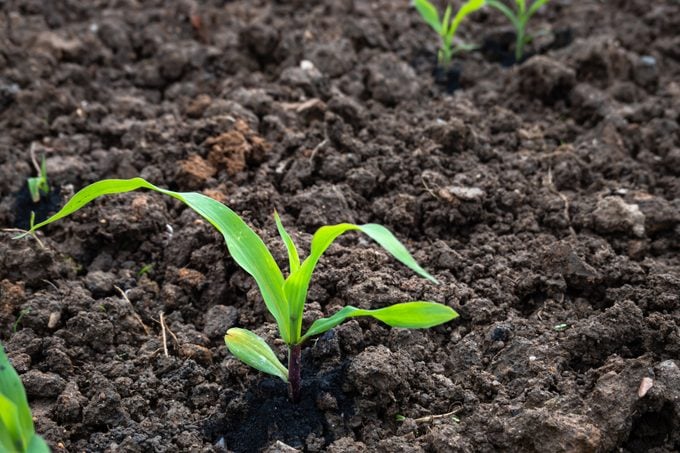How To Grow Corn in Your Backyard Garden
Updated: Sep. 12, 2023

You can successfully grow sweet corn even if you don't have a huge garden or backyard. Here's how to do it.
When I was a kid, I asked my dad why he didn’t grow sweet corn in his garden. He answered that you need a big garden to grow corn. Later, when I had my own garden, I proved you can grow corn in a smaller garden once you understand some basic requirements.
On This Page
How to Plant Corn
All corn varieties, including sweet and ornamental corn, need the same things to thrive.
- Choose a location in full sun. Corn is a heavy feeder. If you can, plant sweet corn in a spot where you grew beans or other legume vegetables the year before.
- Wait until your garden is frost-free. Corn does not tolerate frost and prefers warmer soils to germinate.
- Before sowing seeds, remove weeds and add compost to enrich the soil.
- Plant the corn in blocks at least three rows wide, with a minimum row length of eight feet. Space rows about 18 inches apart in the block. Within each row, sow four or five seeds one inch deep in “hills” (small mounds of soil) spaced about one foot apart. Once seedlings germinate, thin to two seedlings per hill.
- When planting later in the season, bury seeds two inches deep to ensure it doesn’t dry out during germination.
How to Grow and Care for Corn
Watering
Corn needs about one inch of rain a week, especially when ears are forming. If your garden doesn’t get that amount of rain, plan to water the corn patch.
Weeding
Weeds compete with the corn for soil nutrients. Lightly cultivate around the corn to remove any weeds, being careful not to disturb the corn roots.
Fertilizing
In many gardens, extra fertilizer may be needed. Test your soil to determine which nutrients are lacking and apply the appropriate fertilizer based on that information. You can also safely use an organic fertilizer labeled for vegetable gardens. Choose a balanced fertilizer with equal parts nitrogen, phosphorus and potassium (NPK).
Pollinating
Wind pollinates corn. When the corn begins to show tassels (the sprouts at the top), wind blows the pollen from the tassels to the silks of the just-forming ears. That’s why it’s best to plant the corn in blocks instead of one long row, increasing the chances of adequate pollination.
Corn that isn’t well-pollinated will produce ears with gaps in the kernels. To avoid different varieties from cross-pollinating each other, which can affect the taste, plan to grow only one variety of sweet corn. Or provide adequate distances, 300 feet or more, between different varieties.
Controlling pests
Corn earworms are common pests. They’re more of a problem later in the summer, so most home gardeners can avoid them by planting earlier in the season. The corn earworm is generally only in the tip of the ear, so cutting off that tip is also a good, safe option.
Extending your harvest
To harvest sweet corn throughout the summer, plant a block approximately every two weeks. Check the seed packet to determine how long the corn needs to ripen to maturity, so you aren’t planting that last block too late to pick before your first frost.
How Long Does It Take to Grow Corn?

Generally, it takes two to three months from sowing seeds to picking ripe sweet corn. The exact amount of time depends on the variety. Usually, the number of days from sowing to harvest will be noted on the seed packet.
‘Honey and Cream‘ hybrid sweet corn takes approximately 84 days to mature after the seed germinates. ‘Inferno‘ hybrid sweet corn takes approximately 73 days, and ‘Silver N Gold‘ hybrid sweet corn approximately 65 days .
How to Harvest Corn
Most sweet corn is ready to pick about three weeks after you see the silks, the long strands sticking up from the top of the ear. These should be brown but not dried; the husks will still be dark green and not dried.
To verify ripeness, carefully pull back the husk and gently squeeze a kernel to see if the corn is at the “milk stage.” If it’s ripe, the liquid that comes out will be milky white. To harvest, grab the ear, pull it down and twist. Once a stand of corn shows ripe ears, most ears will ripen within a week or so.
To ensure the sweetest corn, cook and eat as soon as possible. The sugars in stored sweet corn quickly turn to starch, which will affect the taste and texture.




















